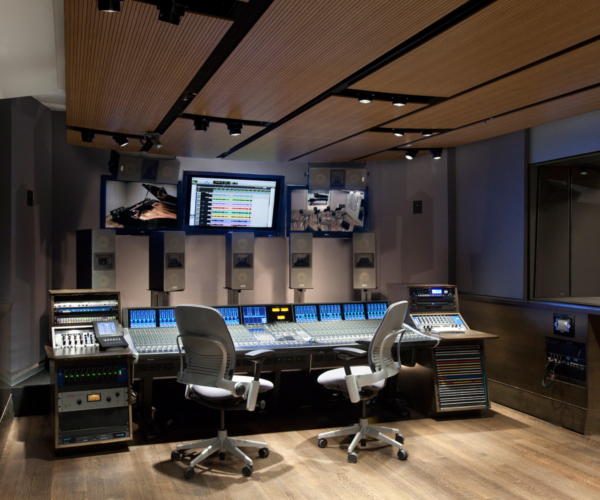The only instrument some of today’s young musicians know how to play is a laptop. What’s more, DIY music producers can achieve decent sound in dorm rooms. They don’t have to finagle themselves into some pricey, corporate studio to put together a viral track. Yet the use of technology in music education is growing as many universities are spending the money—or fundraising—to develop top-notch audio production facilities.
That’s because of growing demand from career-minded students who want to master the latest studio technology, including the best microphones, mixing consoles and recording software. “Students could make a great record without all that gear, but we are trying to educate their ears,” says Cyrille Taillandier, a sound engineer and an associate professor at Drexel University’s Westphal College of Media Arts & Design. “It’s very important that they can listen through those devices—which not everybody can afford.”
The Philadelphia university, recognizing its media arts college as a growing admissions driver, recently hired New York-based architectural and audiovisual design firm WSDG to help it expand the use of technology in music education by creating a 2,500-square-foot production suite that includes a large studio and two production labs.
The new space also consolidates smaller, dispersed facilities that had reached capacity. “We wanted the old model of the big recording studios, with lounges and common areas, where bands and people would collaborate organically,” Taillandier says.
Cue the engineers
It’s not just high-profile college music programs that are upgrading production facilities, says John Storyk, co-founder and principal of WSDG. “You would expect schools like Berklee and the University of Miami and NYU to have very advanced facilities,” Storyk says. “What’s surprising is when an institution like Montgomery County Community College all of a sudden says, ‘We need to have this program because kids are asking for it,’ ” he adds, referring to the Pennsylvania institution.
Related UB Tech® event: “Future of Campus-Wide Audio Setup and Control by Sennheiser.” Details.
His company has also worked with a top engineering school, Rensselaer Polytechnic Institute in New York, to upgrade its music production facilities. University leaders had discovered the combination of music, engineering and digital technology was a natural match for engineering students. “The lines between the three subjects are getting pretty gray,” Storyk says.
Audio is everywhere
But it’s not all about hit records and symphony orchestras. Use of technology in music education has evolved to the point where schools are building facilities so music students can develop expertise in areas that didn’t exist a decade ago. “VR and AR are the wild frontier at the moment,” says Rob Jaczko, chairman of the Music Production and Engineering Department at the Berklee College of Music in Boston. “And a lot of companies—Netflix, Hulu, Amazon, Showtime, HBO—all have huge investments in original programming. They all require people skilled in audio and post-production.”
Use of technology in music education: A musical medical experiment
An experiment with harps and hospice patients reveals the advances of campus audio production equipment. A University of Michigan graduate student used ambient microphones to record soothing classical music for ailing patients, producing one CD in traditional stereo and another with a more immersive, 3D-audio experience. The experiment will now examine which type is more relaxing for patients and caregivers. The next step could be to add a virtual reality experience that could bring people to a beach or other relaxing location.
Creating sound to enhance the immersive visual experiences of virtual and augmented reality—and of increasingly elaborate video games—is particularly complex. It must sync with the video AND recreate the sharp acuity humans have for being able to sense, without looking, where sounds are coming from, Jaczko says.
Read: Transforming STEM into STEAM
Beyond that, faculty and students from many other disciplines have shown a new interest in audio. At the University of Michigan, doctors from the campus hospital asked sound engineers about creating a low-cost cholesterol test that would measure the sound of blood moving through a patient’s veins, says Dave Greenspan, managing producer in the audio studios at the university’s The James and Anne Duderstadt Center.
“Literally everything involves audio components,” he says.
The university has also seen an increase in the number of students pursuing cross-disciplinary majors that involve music. “There are a lot of these students in electrical engineering and computer science,” Greenspan says. “One student is even working on the media side of Japanese studies.”








